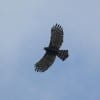 By Jim Stevenson,
By Jim Stevenson,
The Costa Rica tour is off to a rip-roaring start with a Short-tailed Hawk over our hotel and various stuff like motmots hiding from it. Tomorrow it’s up to Poas Volcano and down the Caribbean Slope. More coming next week.
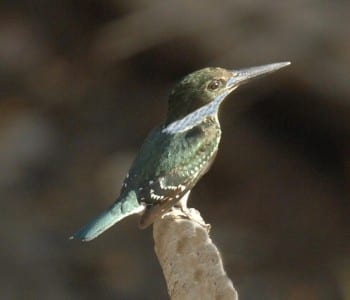
Kingfishers evolved from kookaburras in Australia and have spread all over the habitable world. They are most plentiful in Central America where I usually show my clients five species! This is the blue-necked subspecies of the Green Kingfisher, a nearly extinct race found in only one bend of the river on a waterway that’s just dried up. Ok, it’s a Green Kingfisher with a glaring, white collar due to the intense tropical sun, and I Photoshopped it. LOL
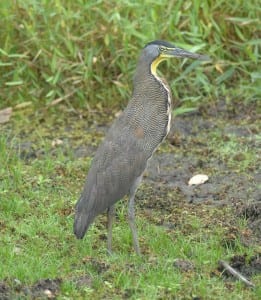
The Bare-throated Tiger-heron is fairly common in non-moving, non-rocky water from Mexico well into South America and one showed up in Texas recently, a new US bird. Tiger-herons will eat fish but much more, including snakes, eels, frogs & toads, and occasionally other birds and rodents. There is a very similar species that lives on rocky streams called the Fasciated Tiger-heron.
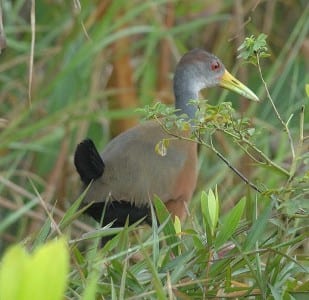
The Gray-necked Wood-rail creeps through tropical vegetation searching for arthropods and lower vertebrates. They remind me of Soras in the way they can’t seem to decide whether to go out in the open or not. The long bill helps grab food in holes and also minimizes danger from crabs and crayfish.
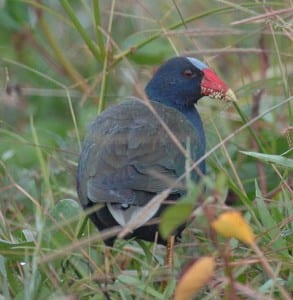
Purple Gallinules leave North America in fall to join many more residents in their ancestral homes in the American Tropics. They are primarily insectivorous but have the interesting habit of ingesting seeds by running their slightly-open bill up a grass stalk covered with seeds, and this one has made a mess with it. Curiously, I have not seen this behavior in PUGAs in Texas or Florida (where I used to live), but have observed it often in the bayous of Louisiana. Geaux figger.
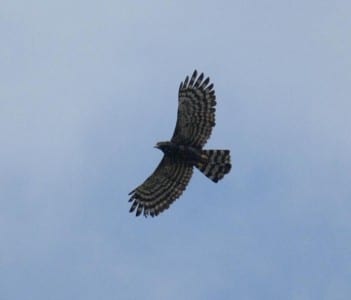
The American Tropics is replete with raptors which amount to smallish eagles, often called “hawk-eagles.” This fairly common species is the Black Hawk-eagle, and the width of its wings indicates its dependence on thermals. These birds are unable to take down the larger primates that Harpies and their ilk will but are far larger and more powerful than buteos.
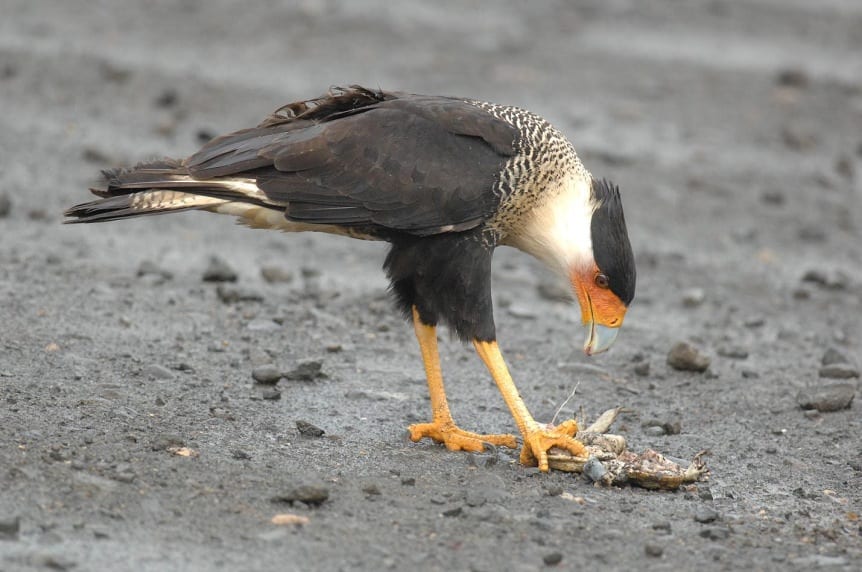
Caracaras are a New World Tropics group, recently removed from the falcon family, I suppose, because there are about ten thousand reasons they ain’t no falcon. Several caracaras have lost some of the feathers on their face, becoming more like the vultures which keep dead flesh from getting on any feathers. This bird, which has an eerie resemblance to a Bald Eagle, is eating a load of road toad.
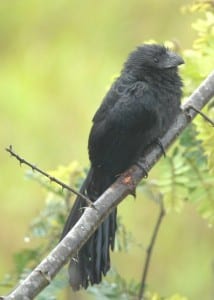
The ani genus is in the cuckoo family but barely reaches the US (Smooth-billeds are nearly extinct in Florida and Groove-billeds are just getting by in Texas). The two species are ecologically separated, as the former prefers more moist areas to the latter’s desire for dry regions. Here in the scrub of Western Costa Rica, you can see the grooves on this bill.
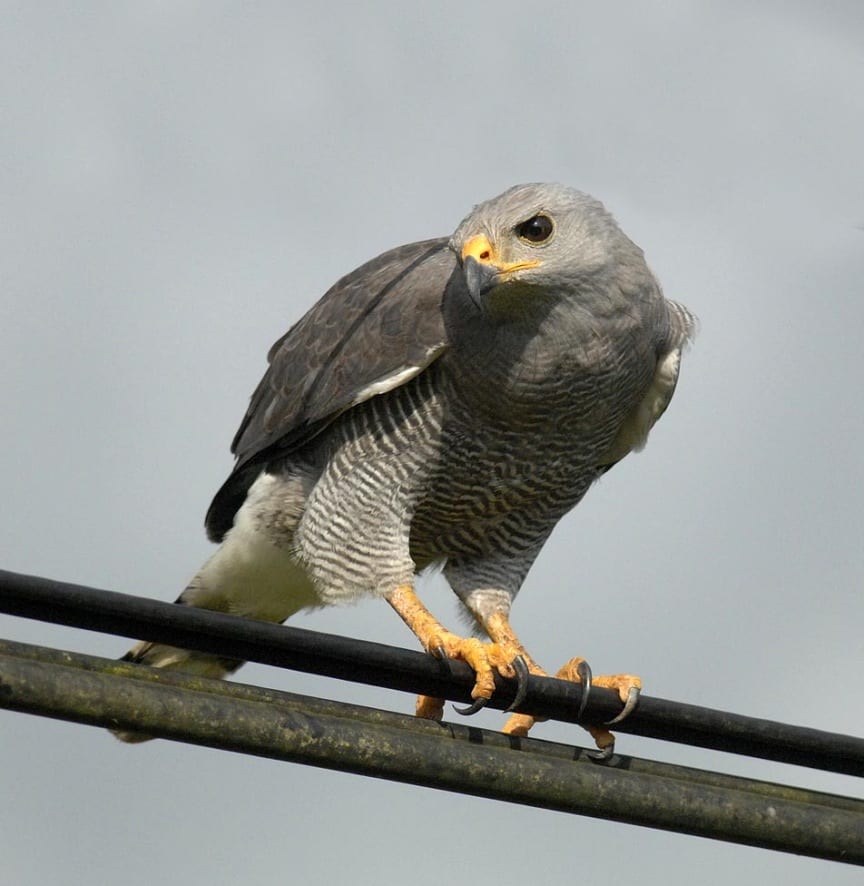
Speaking of ecological separation, the Gray Hawk (above)prefers dry areas (maybethey eat Groove-billed Anis!) while Roadside Hawks (also recently added in Texas to our Country’s list)persist in less arid habitat. Wires alongside roads are both a blessing and a curse; offering hawks a great spot from where to hunt, but also bringing them into close contact with automobiles.
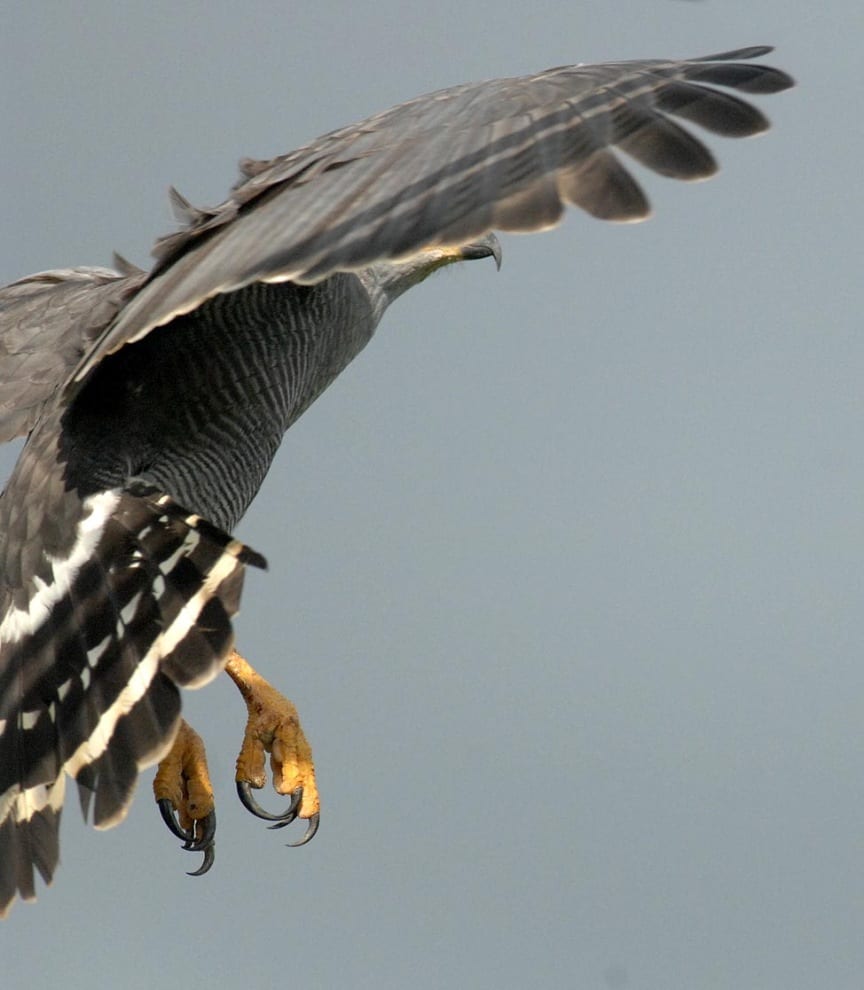
A close look reveals secrets about Gray Hawks. They have oversized feet for killing snakes, a partial tail band (to go with a full one), the rounded wings of a non-migratory buteo, and the same white rump patch found in a number of raptors, like Golden Eagle, harrier, Rough-legged Hawk, etc. I must confess having one of those “duh” moments last fall when watching a red-tail and realizing that most buteos really aren’t brown.
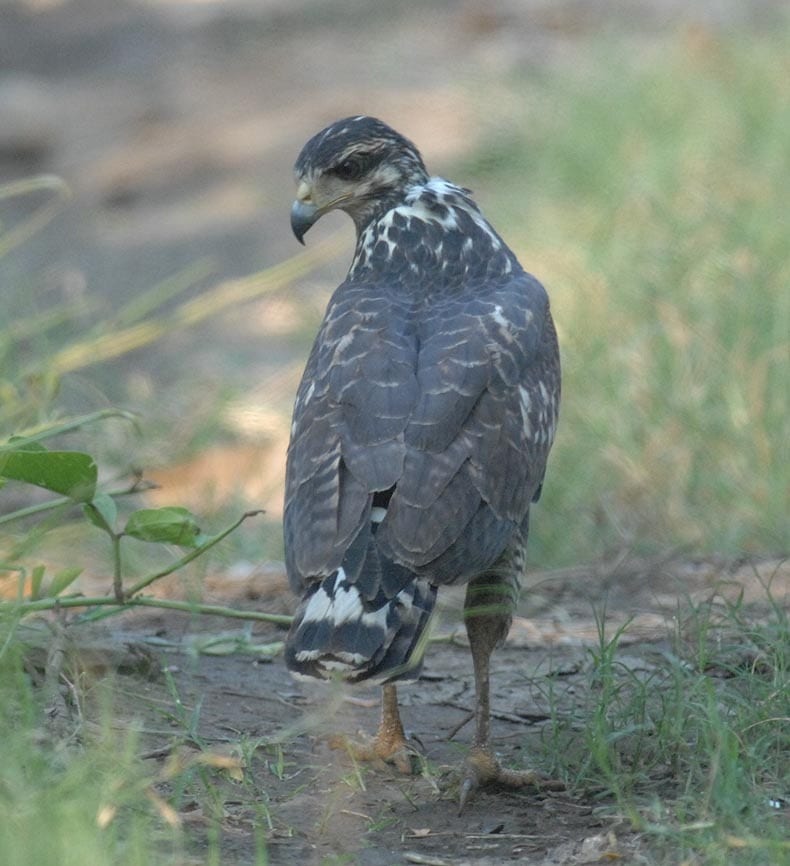
Walking through a coastal forest is a juvenile Mangrove Black-hawk, completely ignoring me until my camera made him shutter. This recently-named species was once the “Black Hawk” and the inland species is now called the Common Black-hawk. These are really quite common themselves, and shellfish enough to hog most of the crabs in the mangrove forest. Hawks have never been blessed with much intelligence, and their young have to learn ways to feed themselves in a hurry.
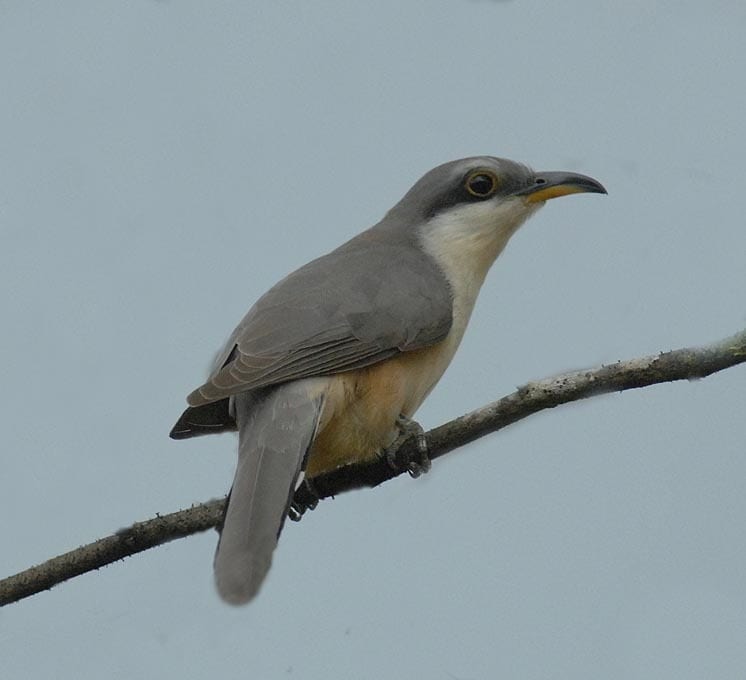
I am quietly mocking those who tell tales of the invisibility of Mangrove Cuckoos, as my squeaker and pisher snatched him from obscurity in the twinkling of an eye. OK, that’s a little melodramatic but I’ll send anyone the picture with the date and location on it who doubt this recent shot! This species occurs in mangrove forests from South Florida to South America, playing hide-and-seek with birders wanting this elusive species. This rather non-migratory bird can be ID’ed by the beige underneath, the black mask and the plain wings and top of tail. Cuckoos are often assumed to be insectivorous and frugivorous but they will not hesitate to take lizards and tree frogs.
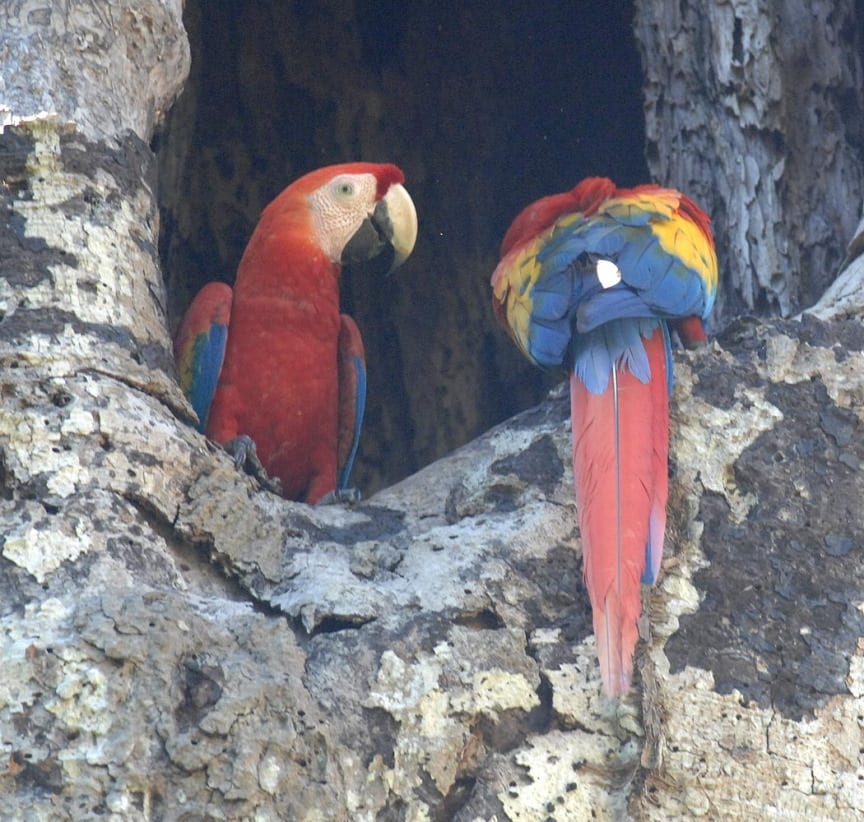
Costa Rica has worked very hard to repopulate their Scarlet (and Great Green) Macaws and this pair is making nice in a huge, hollow tree in Carara National Park. The recent drought has reduced their numbers (and many other birds) but it is hoped that when the rains return, they will too. Some believe these droughts are due to climate change and others think it’s just macaws.
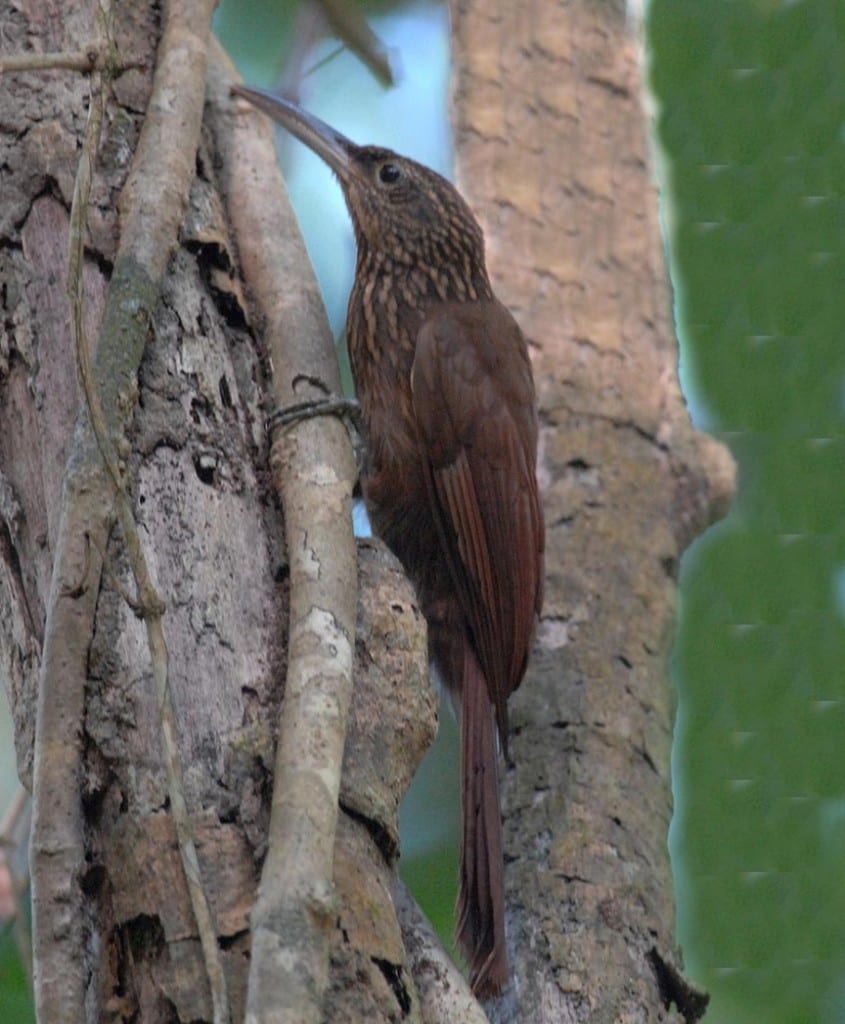
Woodcreepers are a large family of tropical insectivores that could probably eat our little Brown Creeper for breakfast. This bad boy is the Streak-headed Woodcreeper but there are others even larger. Obviously, they “creep” up the bark, extremely well camouflaged, and pry out bugs with their oversized beaks. For my money, this family is among the toughest to sort out, with some species resembling others way too much.
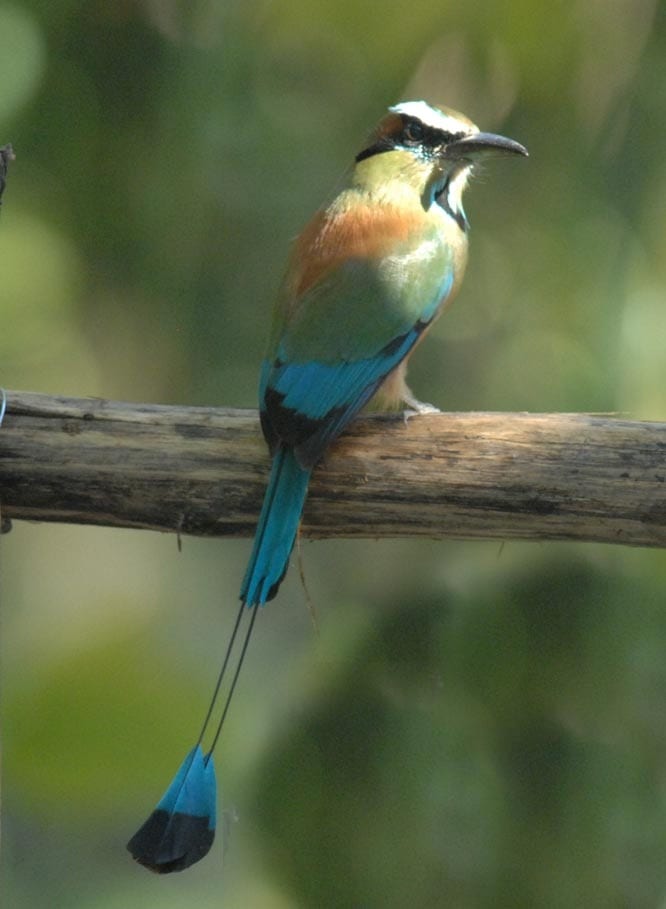
Motmots are colorful, highly-predacious birds of the New World jungles. Most have long tails with tiny racquets but this Turquoise-browed Motmot beats them all. Large insects and smaller vertebrates for their chief diet but they supplement it with fruits and berries when need be. The name of their family comes from their habit of flying from one patch of forest to another. Ignore that last sentence. 😉

 Posted in
Posted in 























